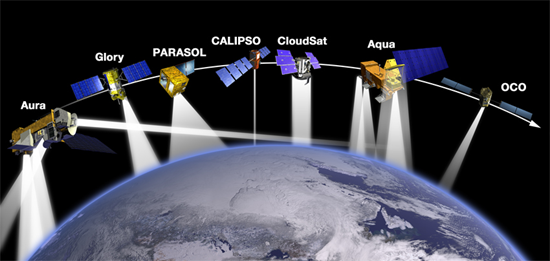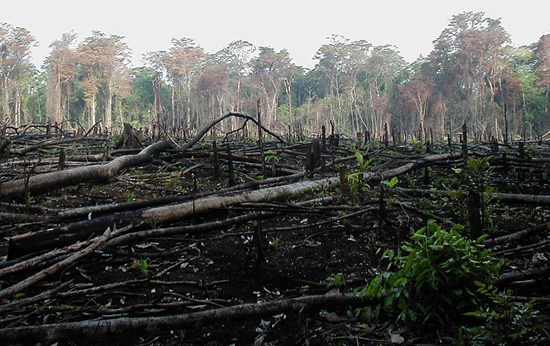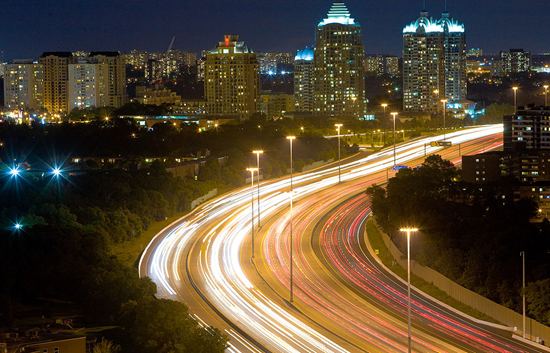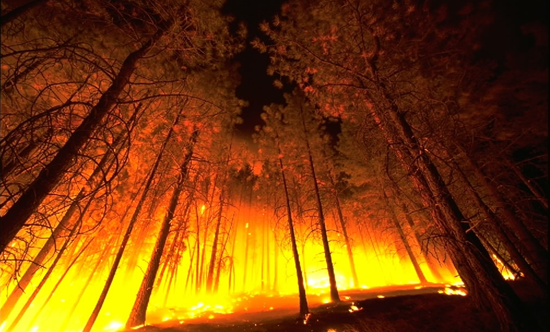
Thousands of man-made satellites currently orbit the Earth. These gizmos make GPS and instant worldwide communication service possible, help us forecast the weather, and contribute to a wide variety of scientific studies. As the number and sophistication of satellites grows, so does the creativity of the world’s scientists and activists. Here are eight things you probably didn’t know we could do with satellites.
1. Monitor potential deforestation
Global Forest Watch Commodities (GFW Commodities) uses satellite observations and open data to provide timely information about what is going on in forests around the world. At the recent SXSW Eco conference, Aaron Steele of World Resources Institute, a partner in the effort, said commodities, such as palm oil and beef, are the biggest drivers of deforestation. By flagging both legal and illegal clearing of trees and fires, the program alerts players along the supply chains of forest-based commodities to the risk, so they can take appropriate action. In the future, the system may be able to flag construction of unauthorized roads or other infrastructure that could suggest illegal commercial activity before trees are cleared.
2. Track Sargassum in the ocean
If you visited a beach in the Gulf of Mexico or Caribbean recently, you likely encountered Sargassum. This floating algae, a.k.a. seaweed, plays an important role in the ocean ecosystem, but its amount and distribution have changed in recent years. In the summer of 2011, when large amounts hit beaches of the eastern Caribbean, scientists used satellite observations to figure out that it originated north of the mouth of the Amazon.
Experts from the University of South Florida and the University of Southern Mississippi track Sargassum using satellites. Scientists at NASA and Texas A&M University at Galveston even developed an app, Sargassum Early Advisory System, or SEAS, that gives early warnings to tourists, fishermen, boaters and the general public on when and where the seaweed will hit the coast.
3. Identify where habitat is needed for migrating birds
Landsat satellites, a joint project of NASA and the U.S. Geological Survey, provide images for the Nature Conservancy’s BirdReturns project. The images identify areas in California’s Central Valley used by birds during spring and fall migrations and help experts estimate the number of birds making the journey. These sites can then be targeted for pop-up wetland habitats, courtesy of area rice farmers who shallowly flood their fields post-harvest to provide forage for birds. Farmers submit bids to the BirdReturns, which pays them for priority habitats. Without freely available satellite imagery from Landsat and other satellite instruments, the birds would be on their own.
4. Reveal artificial light at night
Scientists use a sensor aboard the NASA-NOAA Suomi National Polar-orbiting Partnership satellite to observe Earth's atmosphere and surface at night. The day-night band of the sensor, the Visible Infrared Imaging Radiometer Suite (VIIRS), is sensitive enough to detect dim signals such as city lights, gas flares, auroras, wildfires, reflected moonlight, and even the light from a single ship at sea. The data make clear the extent of the human footprint in terms of artificial light and could help identify areas where night-time lighting - and energy use - could be reduced. Scientists can also use city lights to map urban versus rural areas and to track urban and suburban growth for purposes of energy use and urban hazards planning, studying urban heat islands, and for climate models. This satellite also allows meteorologists to track weather phenomena at night.
5. Fight illegal fishing
Illegal and unreported fishing accounts for up to 26 million metric tons of fish each year, or over 1800 pounds every second, a haul worth some US$23.5 billion a year.
Pew Charitable Trusts and the UK’s Satellite Application Catapult joined forces on a satellite-based system to identify illegal fishing vessels. The Virtual Watch Room can pinpoint the location, name, identification number, fishing license details, and history of a suspect vessel. Algorithms create alerts based on patterns of vessel movements, including speeds typical of fishing, a vessel no longer signalling its position, two vessels in close proximity, or a vessel entering a marine reserve or other restricted-use area. Trained analysts investigate these alerts and, when warranted, notify relevant government authorities, who can use this information to identify and monitor pirate fishing, particularly in remote areas of the world’s oceans.
6. Measure the moisture in soil
Knowing how much moisture is in the soil can improve agricultural production. A NASA satellite launched in early 2015 produces high-resolution global maps of moisture in the top two inches of Earth's soils and can detect whether the ground is frozen or thawed. Scientists use this data to determine whether moisture levels are adequate for maximum crop yield and how evaporation of this moisture affects short-term regional weather and longer-term global climate.
Soil moisture varies between three and five percent in the world’s desert and arid regions to between 40 and 50 percent in saturated soils, depending on precipitation patterns, topography, vegetation cover and soil composition. The satellite produces global maps with 6-mile resolution every two to three days.
7. Control shipping traffic
Some parts of the ocean are so congested with ship traffic that the International Maritime Organization (IMO) and other groups employ traffic separation schemes to reduce risk of collisions. With upwards of 86,000 merchant ships at sea, that risk is significant. Ships can be monitored by satellite to ensure that they are following the rules, and the images also can reveal where changes may be needed in traffic patterns. The International Space Station, which is technically a satellite, tested space-based monitoring of the Automatic Identification System, signals continually broadcast from ship transponders giving identity, position, course, speed, and other information. It currently operates the Vessel Identification System, which integrates AIS and other satellite data to provide better and more useful ship-tracking capability.
8. Spot forest fires
The Moderate Resolution Imaging Spectroradiometer (MODIS) on NASA’s Terra satellite creates maps of actively burning fires around the world on a monthly basis. A colour system shows the number of fires within a 1000-square-kilometre area, with white indicating as many as 100, yellow as many as 10, orange as many as five, and red as few as one fire per day. The maps are useful in a number of ways, including for fighting or suppressing fires and to identify global patterns of natural cycles - rainfall, dryness, and lightning - and human activity, such as agricultural burning.








No comments:
Post a Comment
Please adhere to proper blog etiquette when posting your comments. This blog owner will exercise his absolution discretion in allowing or rejecting any comments that are deemed seditious, defamatory, libelous, racist, vulgar, insulting, and other remarks that exhibit similar characteristics. If you insist on using anonymous comments, please write your name or other IDs at the end of your message.